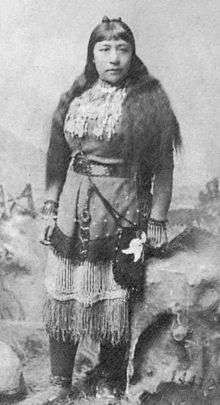Post-Classic stage
In the classification of Archaeological cultures of North America, the Post-Classic Stage is a archaeological term applied to theoretical North and Meso-American societies that existed between 1200 CE and local contact with Europeans. This stage is the fifth of five stages posited by Gordon Willey and Philip Phillips' 1958 book Method and Theory in American Archaeology.[1]
Cultures of the Post-Classic Stage are defined distinctly by possessing developed metallurgy. Social organization is supposed to involve complex urbanism and militarism. Ideologically, Post-Classic cultures are described as showing a tendency towards the secularization of society.[2]
Examples of cultures considered to be Post-Classic include the Aztecs and the late Maya.
The "Post-Classic Stage" followed the Classic stage and typically dates from AD 1200 to modern times.[3]
- The Lithic stage
- The Archaic stage
- The Formative stage
- The Classic stage
- The Post-Classic stage
See also
| Wikimedia Commons has media related to Archaeology of the Americas. |
- Archaeology of the Americas
- Category:Archaeology of the Americas
- Mexica Empire
- Inca Empire
- Iroquois Confederation
- Indigenous peoples of the Americas
- History of the Americas
- Indigenous languages of the Americas
- Classification of indigenous peoples of the Americas
- Population history of American indigenous peoples
References
- ↑ Willey, Gordon R. (1989). "Gordon Willey". In Glyn Edmund Daniel; Christopher Chippindale. The Pastmasters: Eleven Modern Pioneers of Archaeology: V. Gordon Childe, Stuart Piggott, Charles Phillips, Christopher Hawkes, Seton Lloyd, Robert J. Braidwood, Gordon R. Willey, C.J. Becker, Sigfried J. De Laet, J. Desmond Clark, D.J. Mulvaney. New York: Thames & Hudson. ISBN 0-500-05051-1. OCLC 19750309.
- ↑ Gordon R. Willey and Philip Phillips (1957). Method and Theory in American Archaeology. University of Chicago Press. ISBN 978-0-226-89888-9.
- ↑ "Method and Theory in American Archaeology" (Digitised online by Questia Media). Gordon Willey and Philip Phillips. University of Chicago. 1958. Retrieved 2009-11-20.

.svg.png)
